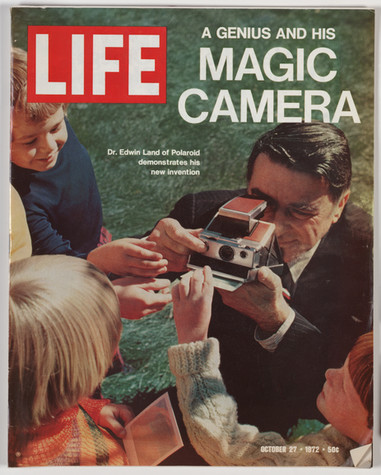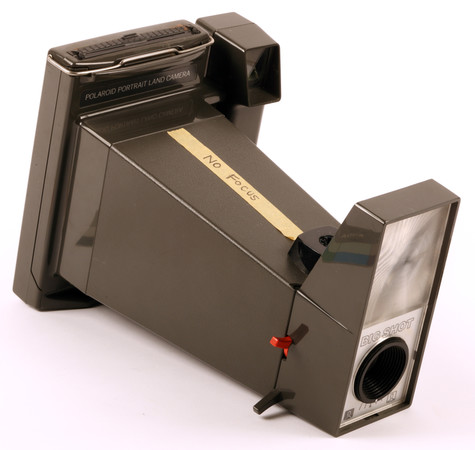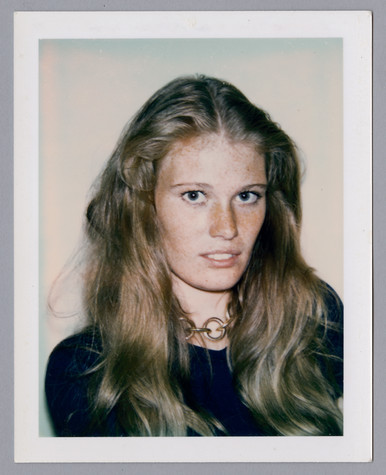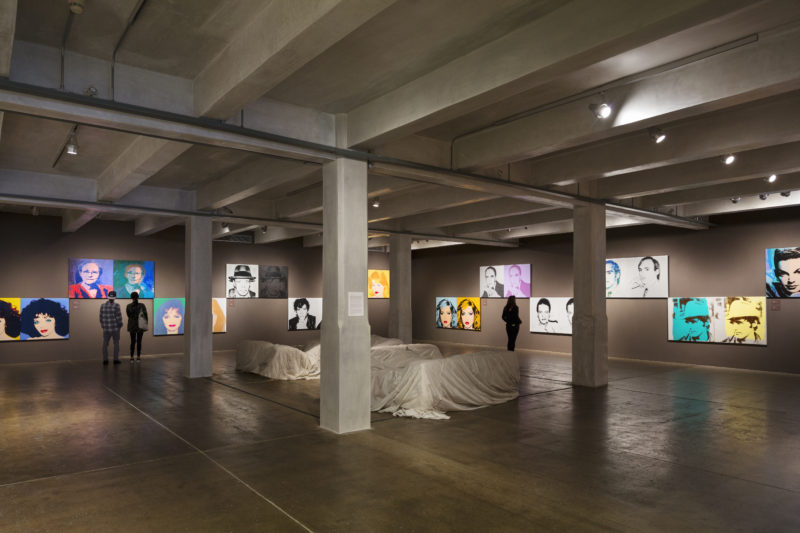Time Capsule 21:
Photography
Andy Warhol used photography to view and interact with the world throughout his career. As a commercial artist in the 1950s, he used photographs as the basis for his drawings, tracing the contours of images with his blotted line technique. Warhol continued to use photographic source material for his early Pop paintings in 1961, using an opaque projector to transfer subject matter. From 1962 onwards, Warhol’s practice incorporated photomechanical silkscreen printing to manipulate images from American popular culture including newspaper headlines, Life magazine features, and movie star glossies. Warhol also used photobooth machines and Polaroid cameras for commissioned portraits, frequently photographing celebrities and friends in the art, entertainment, and fashion worlds. Many of these were later published in his books, Andy Warhol’s Exposures (1979) and Andy Warhol’s Party Book (1988).
Polaroid

Life - Vol. 73, no. 17 (October 27, 1972). The Andy Warhol Museum, Pittsburgh; Founding Collection, Contribution The Andy Warhol Foundation for the Visual Arts, Inc.
TC21.72
TC21 Object: Life - Vol. 73, no. 17 (October 27, 1972)
Andy Warhol subscribed to Life magazine and tore out endless pages of its photographs for ideas and art sources. He may have saved this magazine as a record of the new SX-70 Polaroid technology.

Polaroid® Big Shot Portrait Land Camera, 1971-1973
The Andy Warhol Museum, Pittsburgh; Founding Collection, Contribution The Andy Warhol Foundation for the Visual Arts, Inc.
1998.3.2348
Related Object: Polaroid® Big Shot Portrait Land Camera, 1971-1973
Warhol purchased his first Polaroid camera in the mid-1960s, and began to use the “Big Shot” model soon after it was introduced to the market in 1971. He used Polaroid photographs almost exclusively as the basis for his silkscreened portraits. Warhol liked both the instantaneous nature of the image and its high contrast quality that flattered its subjects.

Andy Warhol, Yoyo Bischofberger, 1971
The Andy Warhol Museum, Pittsburgh; Founding Collection, Contribution The Andy Warhol Foundation for the Visual Arts, Inc.
TC21.55
TC21 Object: Andy Warhol, Yoyo Bischofberger, 1971
Warhol started painting portraits on commission in the early 1960s. These works developed into a significant aspect of his career and were a main source of income in the 1970s. Many of his subjects were well known in international social circles, the art world, and the entertainment industry. The subject of this photo is the wife of Bruno Bischofberger, an important and successful art dealer in Switzerland.

Photo by Dean Kaufman
Related Artwork: Commissioned portrait gallery, The Andy Warhol Museum
Warhol’s commissioned portraits involved taking many Polaroid snapshots of the subject, selecting one image to make into a silkscreen, and painting each background to suit the sitter. The first portrait cost twenty-five thousand dollars, and each additional portrait panel five thousand dollars. Most patrons would buy at least two, if not more. By the end of Warhol’s life prices were considerably higher—thirty thousand dollars for one portrait and twenty thousand dollars for each additional panel.

